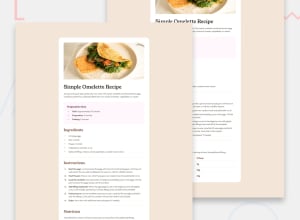
Design comparison
Solution retrospective
I'm most proud of successfully implementing a responsive design using Tailwind CSS and CSS Grid, which allowed me to create a layout that adapts seamlessly to different screen sizes. This approach made the design both flexible and maintainable. However, if I were to approach this project again, I would focus more on creating reusable components from the start. While using Tailwind classes directly in components offers flexibility, I realized that extracting common patterns into separate components could have improved code readability and maintenance. Additionally, I would have spent more time optimizing images and considering accessibility from the outset of the project, rather than addressing these aspects later in the development process. These insights will definitely inform my approach to future projects, helping me create more efficient and user-friendly web applications.
What challenges did you encounter, and how did you overcome them?One of the main challenges I faced was the overuse of @apply directives in CSS modules when using Tailwind CSS. Initially, I thought this approach would improve code readability and organization. However, I soon realized that excessive use of @apply could lead to performance issues in larger projects and negate some of the benefits of using Tailwind CSS, such as reduced CSS bundle size and improved maintainability. To overcome this, I refactored my code to use Tailwind classes directly in the TSX, reserving @apply for small, highly reusable components like buttons or form inputs. This change not only improved the project's performance but also helped me better understand and utilize the full potential of Tailwind's utility-first approach.
I'm particularly interested in receiving guidance on optimizing styling approaches in React.js and Next.js projects. While I've made progress in balancing performance and readability using Tailwind CSS, I'm keen to explore advanced techniques that can further enhance both aspects. Specifically, I'd appreciate insights on structuring styles in larger applications where the complexity of components increases. Any advice on maintaining both performance and readability in styling complex React components would be extremely helpful.
Community feedback
Please log in to post a comment
Log in with GitHubJoin our Discord community
Join thousands of Frontend Mentor community members taking the challenges, sharing resources, helping each other, and chatting about all things front-end!
Join our Discord
